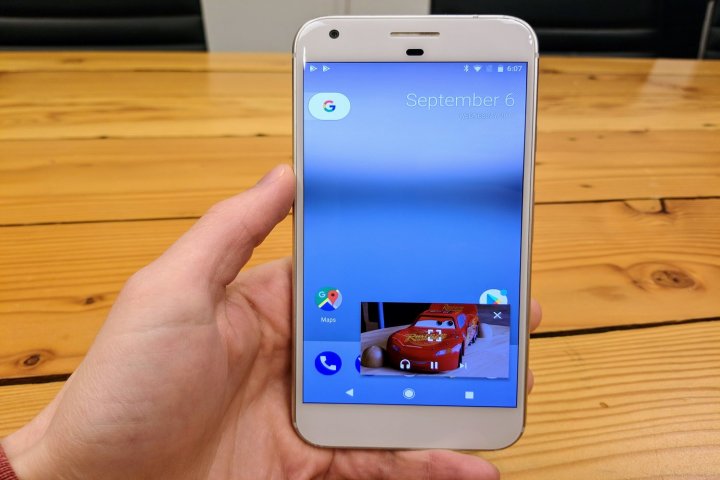
It can be a little tricky setting it up on your phone, but what’s worse is how it won’t work for any app. Developers have to implement picture-in-picture mode on a case-by-case basis. We’ve compiled a list of popular supported apps so far, and we explain how to use picture-in-picture mode in Android 8.0 Oreo.
Apps that support Android 8.0 Oreo’s picture-in-picture mode
It isn’t always clear whether an app supports Android 8.0 Oreo’s picture-in-picture mode, as it’s incumbent on developers to specify on the app’s Play Store description, but not all of them have.
To make matters a bit simpler, we’ve compiled a list of popular apps that support Android 8.0 Oreo’s picture-in-picture mode. It’s not exhaustive, but it should help get you started.
How to launch Android 8.0’s Picture-in-Picture Mode
There isn’t a predictable way to launch Android 8.0 Oreo’s picture-in-picture mode. Most apps switch to a floating window view with a tap of
Take Google Chrome, for example. To get picture-in-picture mode working properly, you have to watch a video in fullscreen mode before tapping the home button. In VLC, you have to tap the app’s menu button and the picture-in-picture option while the video’s playing.
YouTube is another matter entirely. As of publication time, YouTube’s picture-in-picture mode requires $10-a-year subscription to YouTube Red, YouTube’s premium ad-free service.
To figure out how to launch an app’s picture-in-picture mode, you’ll have to play around in the app or the app’s settings.
How to use Android 8.0 Picture-in-Picture Mode’s controls
Android 8.0 Oreo’s picture-in-picture mode puts playback controls front and center. Tap on the PiP window and you’ll see play, fast forward, and rewind buttons, and a center button that maximizes the app. If you’re watching a video from YouTube or VLC, you’ll get a headphone shortcut that plays the video in the background. And if you’re watching a playlist, tapping the fast forward button skips to the next video in the list.
When you’re done with the playback controls, tapping on the window again hides them.
The picture-in-picture window is moveable. Tap, hold, and drag to move it to any part of your phone or tablet’s screen, and lift your finger to release it. If you let go somewhere in the middle, the window snaps to the closest valid location.
When you’re ready to dismiss it, a simple tap, hold, and drag to the bottom of the screen does the trick.
How to disable Android 8.0 Oreo’s picture-in-picture mode for specific apps
Android 8.0 Oreo’s picture-in-picture mode might be useful for multitasking, but it can be annoyingly easy to trigger by mistake. Luckily, you can disable picture-in-picture mode on a per-app basis.
Here’s how to do it:
- Open the Settings menu on your phone or tablet.
- Tap Apps & Notifications, and then tap on the Advanced menu.
- Tap Special App Access.
- Look for the picture-in-picture option and tap on it.
- You’ll see a list of all installed apps that support picture-in-picture. They’re enabled by default; to disable one, tap it and slide the Allow picture-in-picture toggle to off.
Editors' Recommendations
- How to reset default apps on an Android phone or tablet
- How to use Android Recovery Mode to fix your phone or tablet
- The best golf apps for iPhone and Android: 8 best ones in 2023
- How to switch phone carriers
- How to use WhatsApp





